(NLDO) - Half a century since its establishment, Ho Chi Minh City University of Law has gone through a proud journey.
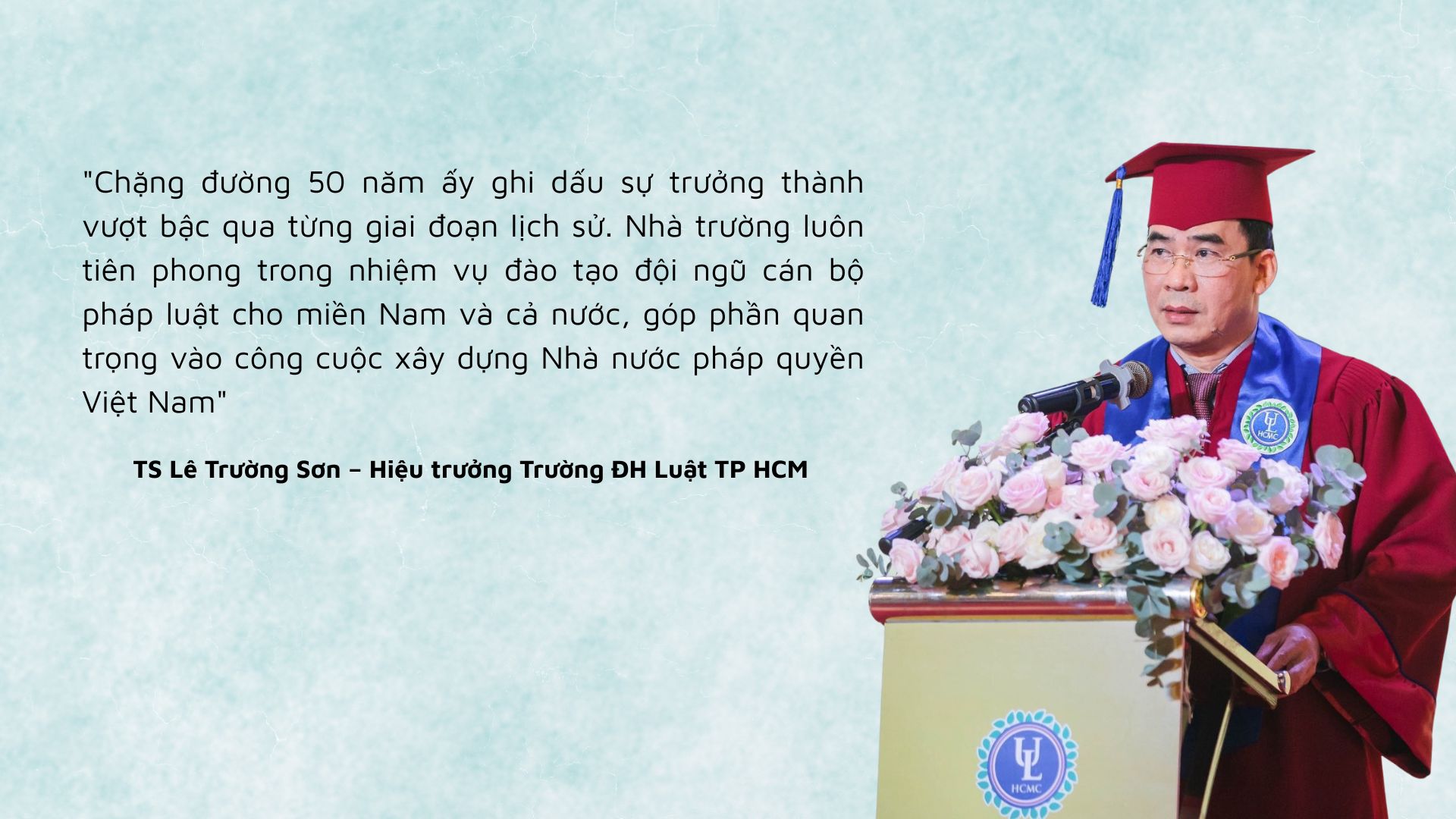

Immediately after the complete liberation of the South, the need to train judicial officers for the Southern region became urgent. In May 1975, the Government decided to establish the Central Judicial Officers School in Ho Chi Minh City - an institution under the Supreme People's Court, with the task of training judicial officers, especially judges, for the Southern provinces.
By 1976, the school officially came into operation, becoming the first cradle of systematic legal training in the South after the unification. This was the first predecessor of today's Ho Chi Minh City University of Law.
In the early years of its establishment, the facilities and teaching staff were limited, the Judicial Officers School only organized short-term and intermediate courses on law. Despite the difficult conditions, the school made efforts to complete its mission of training hundreds of judicial officers for the locality, contributing to the stability of the judicial system in the post-war period.
In 1982, when the Ministry of Justice was re-established, the school was transferred to the Ministry of Management and renamed Ho Chi Minh City Legal High School. On the basis of inheriting the previous Judicial Cadre School, the Legal High School has the task of training cadres at the intermediate legal level, contributing to standardizing knowledge for the team of court, prosecutor's office and local judiciary cadres.

In the late 1980s, the country entered a period of innovation, the demand for university-level legal staff was increasing.
On December 25, 1987, the Council of Ministers (now the Government ) issued Decision No. 357-CT to establish the Ho Chi Minh City University of Law Branch under the Ministry of Justice. This event marked a remarkable development step of the school, from a junior college to a branch of the University of Law, with the task of training regular bachelors of law for the southern provinces.

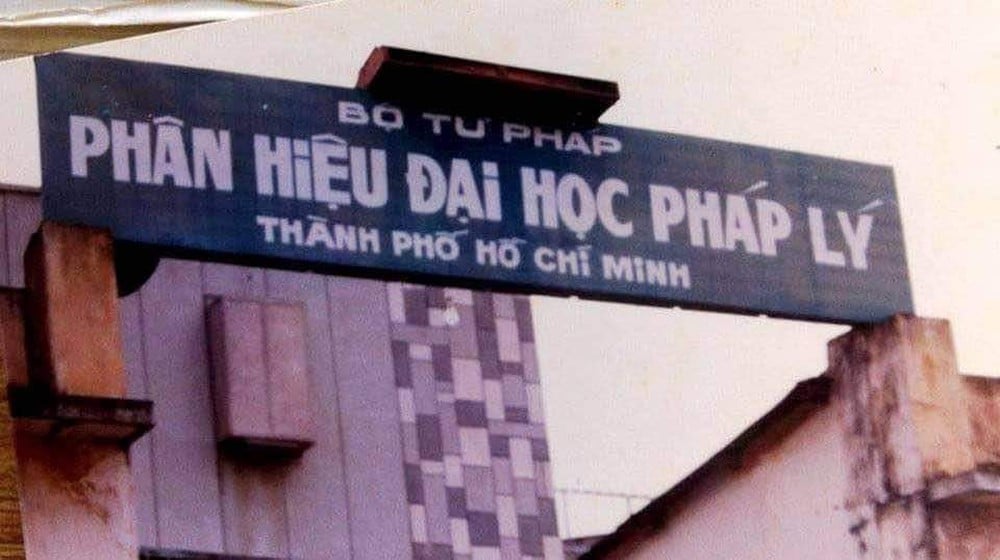
For the first time, Southern students have a university address specializing in law right in Ho Chi Minh City. During this period, the Branch gradually improved its teaching staff, built a systematic curriculum and university training program, laying the foundation for future training quality.
In 1993, the Ministry of Justice decided to change the name of the Ho Chi Minh City University of Law Branch to the Ho Chi Minh City University of Law Branch, unifying the name "law" instead of "legal" to conform with the domestic university education system.
The period 1987-1995 witnessed a rapid increase in the number of students enrolled and graduated, and the training program was gradually completed. At that time, there were still many difficulties and shortages in the lecture hall, but the enthusiasm and high professional level of generations of lecturers had forged a serious academic tradition for the School.

In 1995, the Vietnamese higher education system underwent a major transformation with the establishment of National Universities. In that context, Ho Chi Minh City University of Law faced new development opportunities. On March 30, 1996, the Ministry of Education and Training signed Decision No. 1234/GD-DT to establish Ho Chi Minh City University of Law under the Ho Chi Minh City National University (VNU). The new school was established on the basis of merging the Ho Chi Minh City University of Law Branch (under the Ministry of Justice) with the Faculty of Law of Ho Chi Minh City University of General Studies.
For the first time, a complete law university was established in Ho Chi Minh City, gathering both the strengths of the legal training system of the Ministry of Justice and the academic depth of the Faculty of Law of the University of General Sciences.
During its time under the National University (1996-2000), Ho Chi Minh City University of Law had the opportunity to integrate more deeply into the national university education system. The school developed updated training programs, expanded the field of scientific research, and established cooperative relationships with other units in the National University.
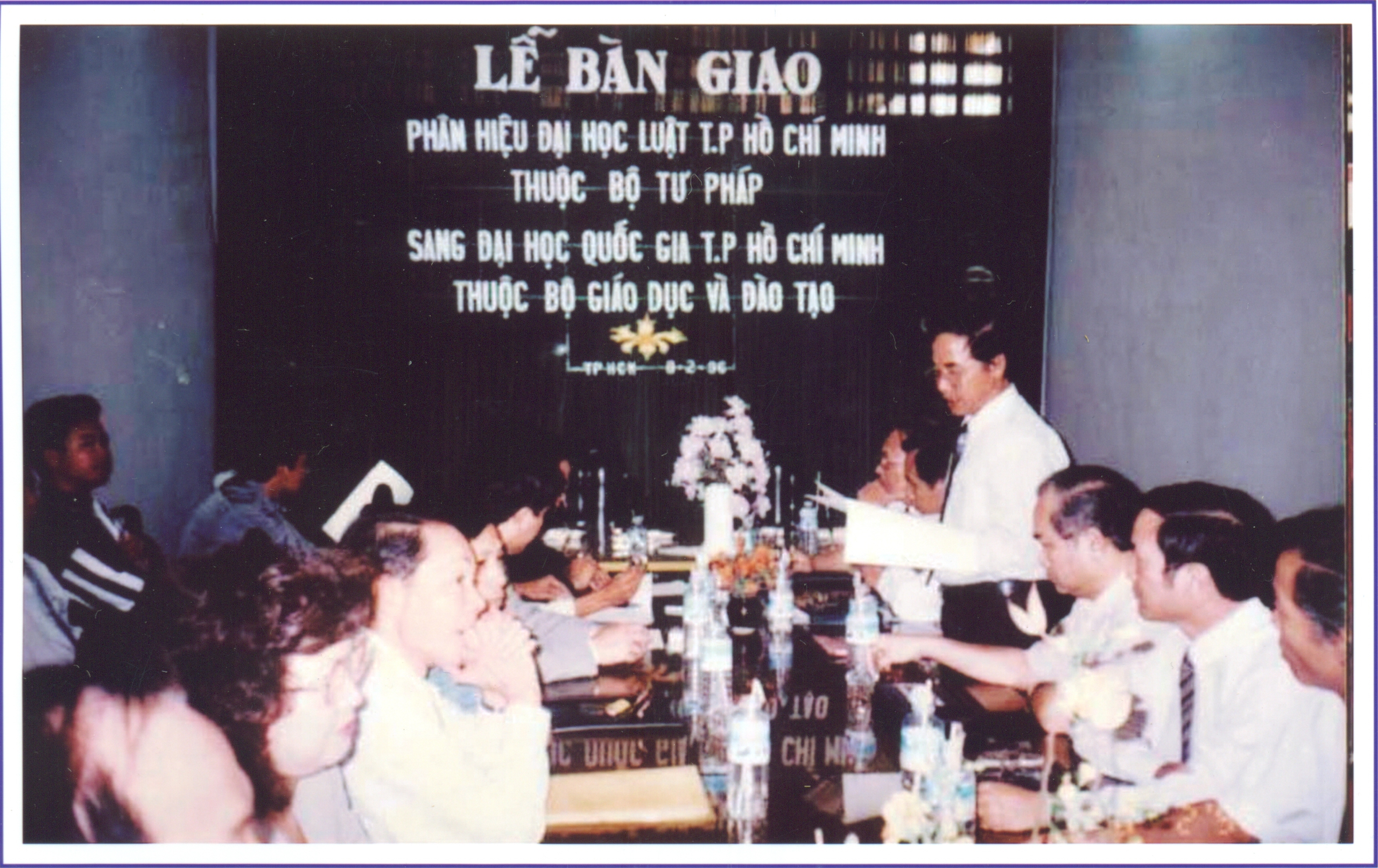
Handover ceremony of Ho Chi Minh City University of Law Branch, under the Ministry of Justice, to Ho Chi Minh City National University, under the Ministry of Education and Training
In 2000, an important decision shaped the independent future of the school: On October 10, 2000, the Prime Minister issued Decision No. 118/2000/QD-TTg separating Ho Chi Minh City University of Law from Ho Chi Minh City National University, becoming an independent university under the Ministry of Education and Training.
From here, the school entered a new phase – operating more autonomously and being directly responsible to the Ministry of Education and Training for all aspects of its operations. This decision created conditions for the school to maximize its internal strength and proactively build a development strategy in line with its legal training mission.

Since 2000, Ho Chi Minh City University of Law has made great strides, constantly affirming its position as one of the two key national legal training institutions. With the advantage of autonomous operation, the school has proactively implemented many comprehensive reforms in training and administration.
In 2013, the Government officially identified Ho Chi Minh City University of Law, along with Hanoi Law University, as two key schools in training legal staff in the country. By 2017, the school was selected to participate in the pilot project to innovate the operating mechanism, aiming for higher university autonomy - a milestone demonstrating the pioneering spirit in reforming higher education.

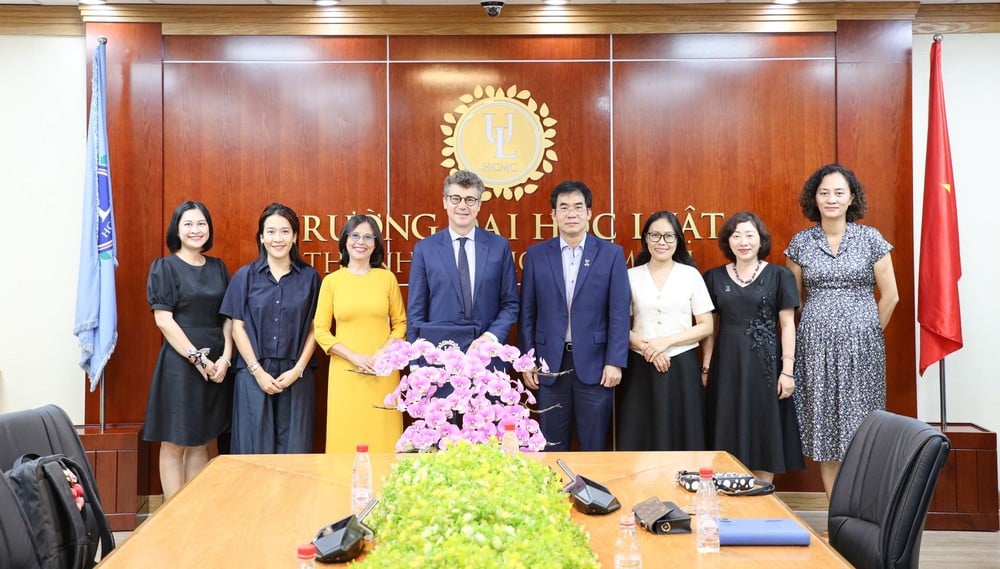
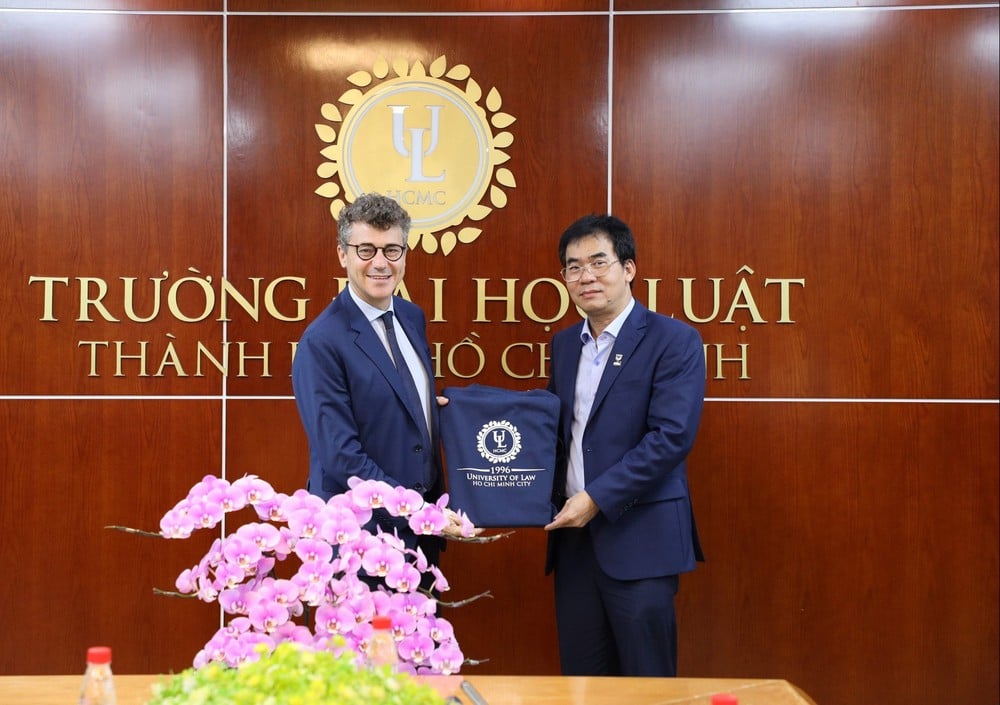
In order to promote cooperation in the fields of society, research and sustainable development, Ho Chi Minh City University of Law organized a working session with UNESCO representatives in Vietnam in October 2025.

On the occasion of celebrating the 43rd anniversary of Vietnamese Teachers' Day November 20, the school organized a series of exciting sports activities.
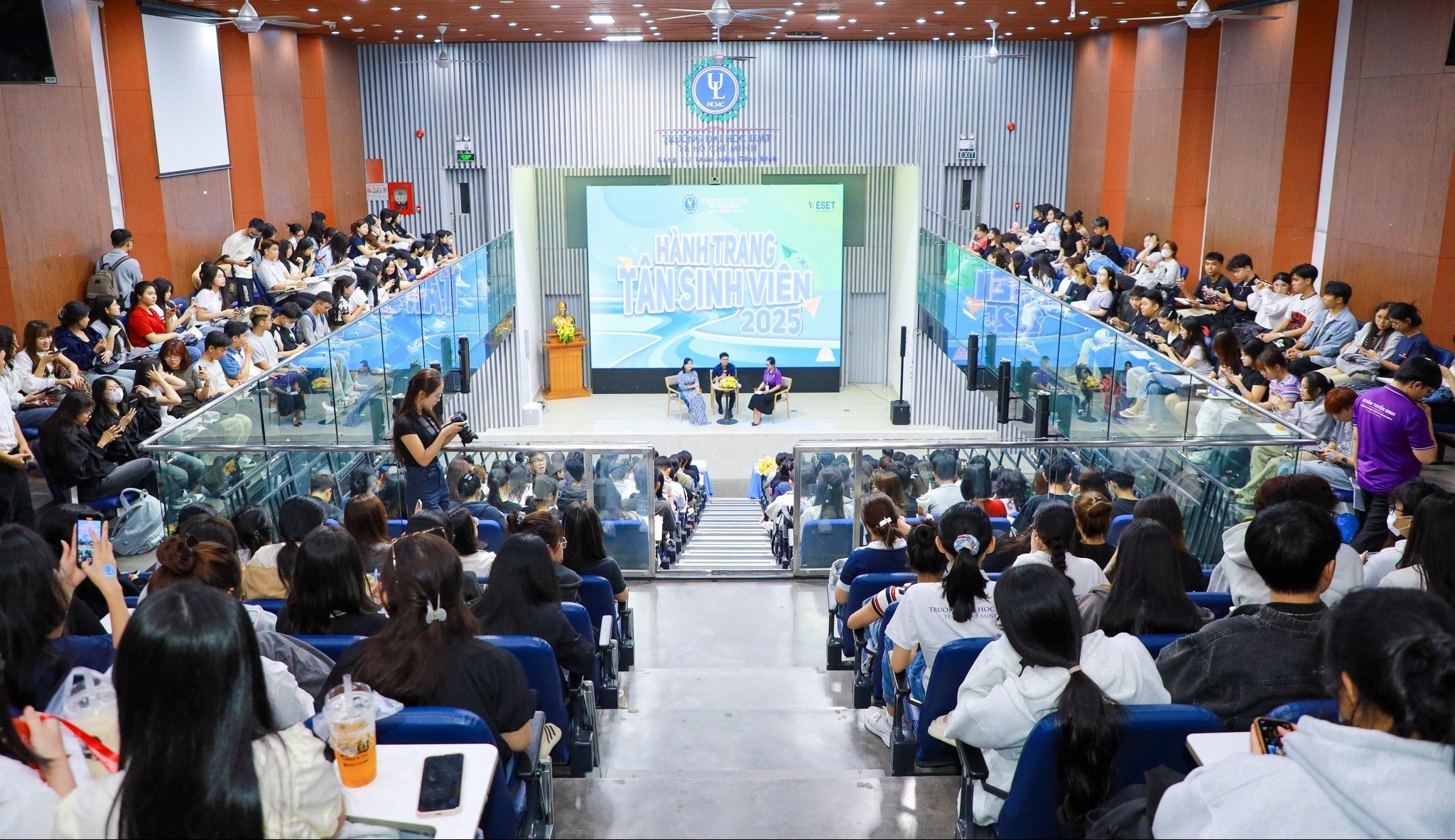
The Admissions Consulting Department of Ho Chi Minh City University of Law organized a discussion on "New Student Luggage" in 2025 to introduce, support and answer questions and concerns of new students.
According to data updated to July 2025, the school has 459 staff and employees, including 329 lecturers, including 4 professors, 20 associate professors, 126 PhDs, 202 masters and 1 bachelor.
The current training scale reaches 10,426 full-time students and 682 part-time students, with 142 classes in operation.
In the past 5 years, the school has enrolled 18,081 students, trainees and postgraduates; and awarded degrees to 11,311 people, including 35 PhDs, 1,428 masters and 15,838 bachelors.
Many of the school’s alumni have held important positions in Party and State agencies, organizations and businesses at home and abroad – a vivid proof of the school’s output quality. The student-to-teacher ratio is maintained at a reasonable level, ensuring training quality.

Ho Chi Minh City University of Law has been honored many times to receive noble awards from the Party and the State.
In 2000, the school was awarded the Second Class Labor Medal; followed by the Prime Minister's Certificate of Merit (2011), the Government's Emulation Flag (2012), and especially the First Class Labor Medal in 2016.
In the 2017-2018 school year, the school was also recognized by the Ministry of Education and Training with the title "Excellent Labor Collective". These are not only proud milestones for the school's teaching staff, but also a driving force for the school to continue to develop strongly in the period of integration and innovation in higher education.


Lovely moments of lecturers at Ho Chi Minh City University of Law

Students with outstanding achievements participate in the commendation, reward and scholarship award ceremony for the year 2024 - 2025.
In 2026, Ho Chi Minh City University of Law will not only celebrate its 50th anniversary but also mark the starting point for a new development strategy with a vision to 2045.
Dr. Le Truong Son, Principal of the School, identified three important strategic pillars to adapt to the new context of judicial reform, digital transformation and international integration.
The first pillar is to pioneer in building a comprehensive "digital university", strongly applying information technology, artificial intelligence (AI) and big data in all aspects of operations from management, teaching to research.
The second pillar is that the school aims for a multidisciplinary, interdisciplinary university model, not only training in traditional law but also expanding to areas that intersect law with technology, economics, management, etc. to create a generation of law graduates with interdisciplinary thinking, adapting to a rapidly changing world.
The third pillar continues to affirm its position as a national key school in legal training, focusing on developing key majors to meet the needs of socio-economic development and international integration, providing high-quality legal human resources to serve the process of building and perfecting the Vietnamese legal system.



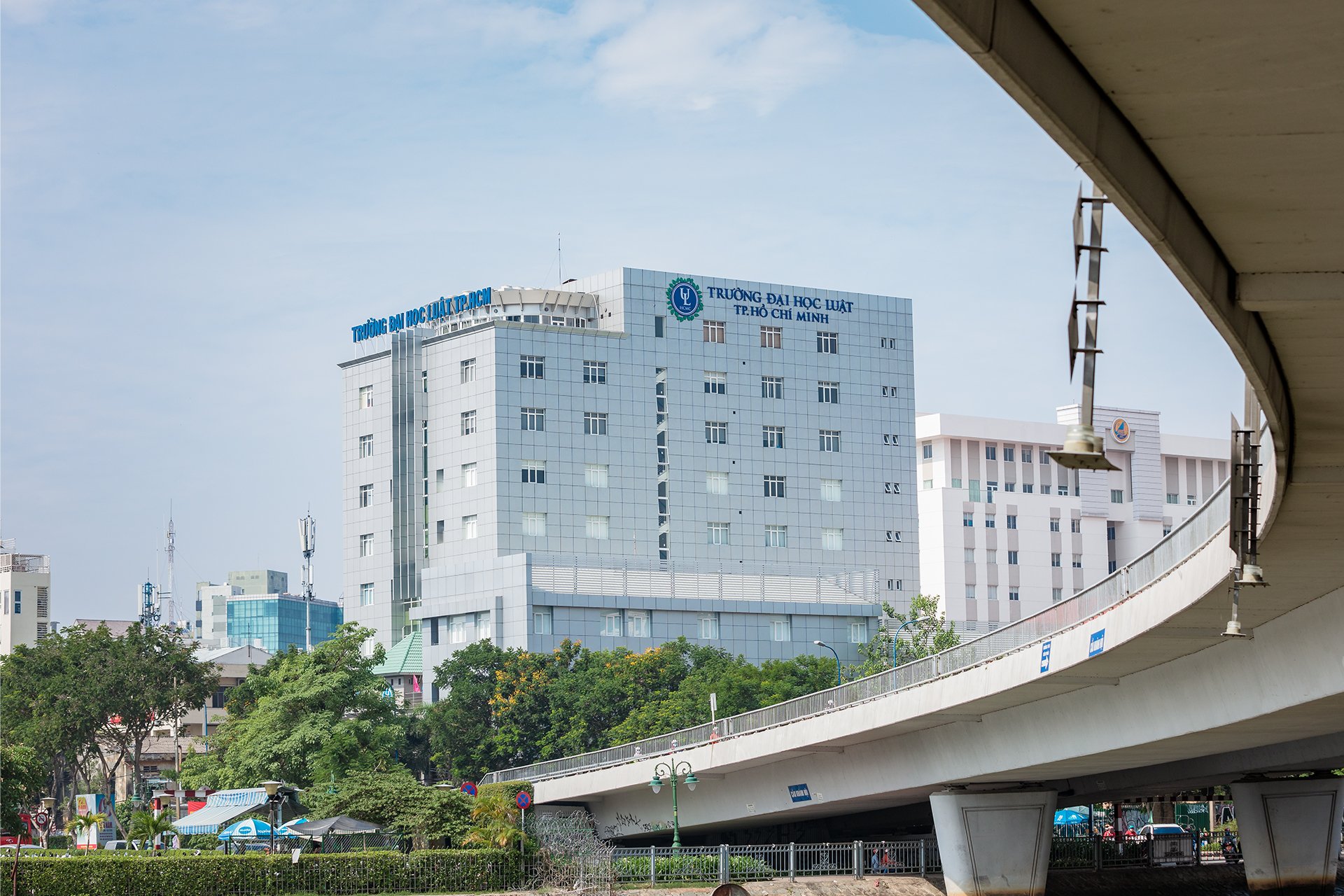



Source: https://nld.com.vn/nua-the-ky-vuon-minh-cua-truong-dh-luat-tp-hcm-19625112514304046.htm


![[Photo] President Luong Cuong attends the 50th Anniversary of Laos National Day](/_next/image?url=https%3A%2F%2Fvphoto.vietnam.vn%2Fthumb%2F1200x675%2Fvietnam%2Fresource%2FIMAGE%2F2025%2F11%2F27%2F1764225638930_ndo_br_1-jpg.webp&w=3840&q=75)






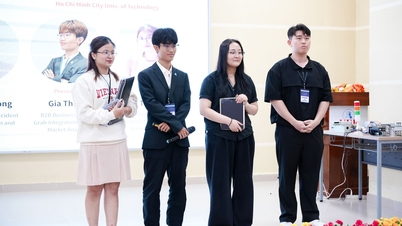









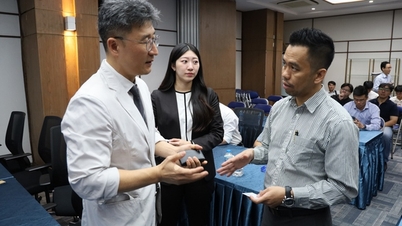
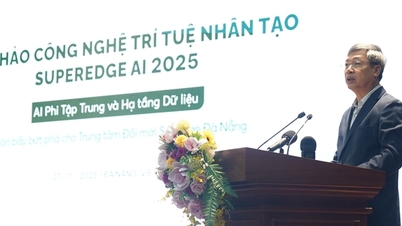










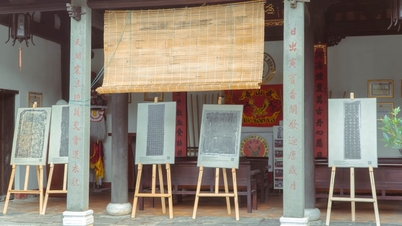
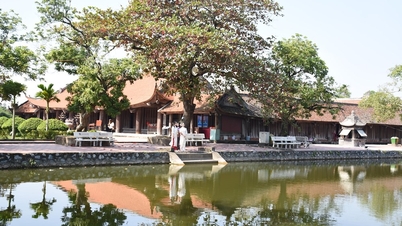


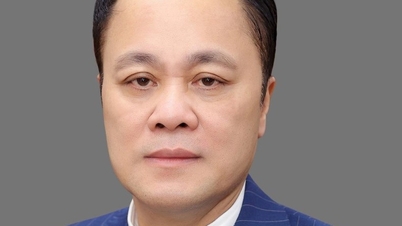



























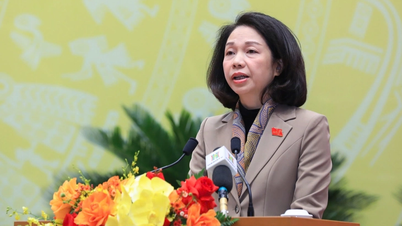

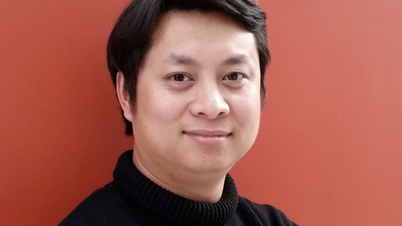




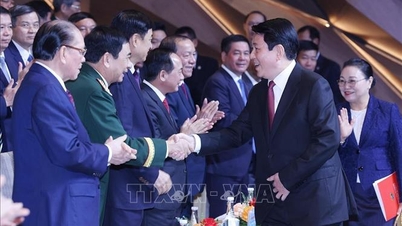









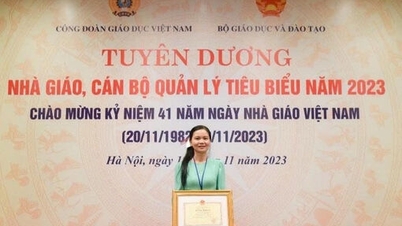

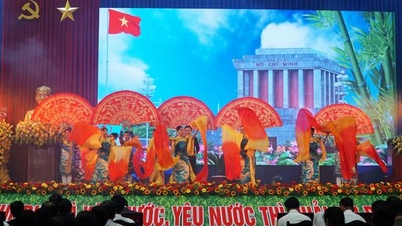



















Comment (0)